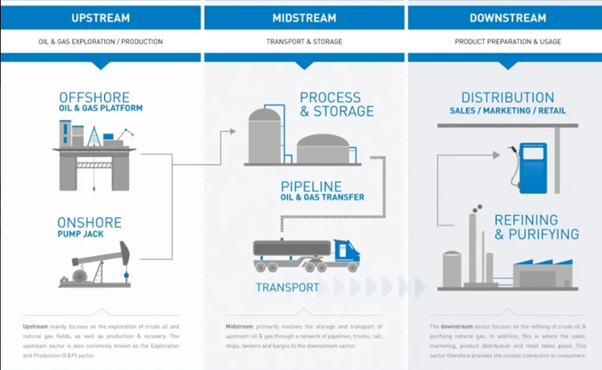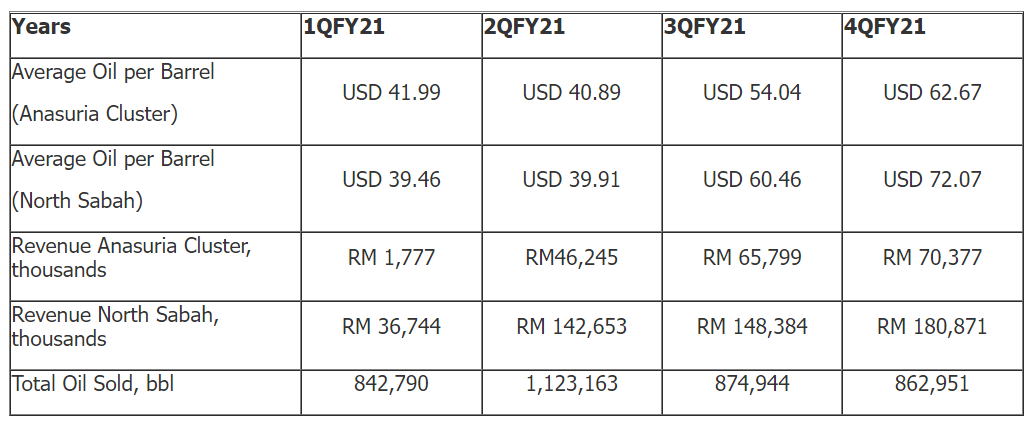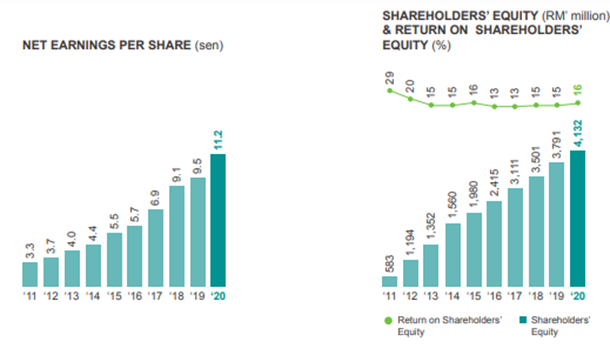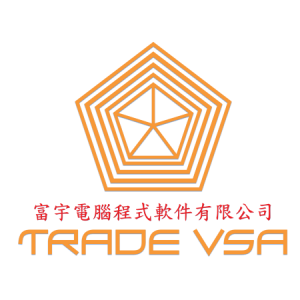3 Revenue Stream You Must Look into KLSE Energy Sector Before You Buy!
Introduction
A few days ago, crude oil posted a seventh straight weekly gain and rose above $80 per barrel for the first time since 2014. The rise in oil prices is primarily due to increased demand for oil as the economy reopens, as well as rising inflation concerns. As a result, as investors, we can profit from rising oil prices by investing in oil companies, as the trend in oil companies is normally correlated with rising oil prices. Before that, let understand how the oil and gas industry works.
Upstream Midstream and Downstream
Source: upstream midstream downstream (oil industry) – AAVOS International
The oil and gas industry can be a complex jargon that new investors may find difficult to comprehend. Today, I’ll break it down for you in a straightforward manner so that you can understand it better.
The oil and gas industry is broken down into three segments which comprised of upstream, midstream, and downstream
Upstream
Companies involved in the exploration and production of oil and gas are known as upstream businesses. They are the company who build drilling machine in onshore or offshore to drill the oil and gases. The upstream company normally are at higher risk as they need high investment in capital to locate and drill oil and gases. Besides they are technologically intensive as well.
However, they are usually the first to benefit directly from an increase in crude oil prices.
Example of companies: HIBISCUS, VELESTO, SPRING
Midstream
Businesses that are focused on transportation are classified as midstream. They are in charge of transporting the extracted raw materials to refineries where the oil and gas are processed. Shipping, trucking, pipelines, and raw material storage are all characteristics of midstream companies.
Besides, those company that provides engineering services and solution for oil and gas sector also can be classified as midstream as well. The success of upstream companies normally has a direct effect on the midstream
Example of companies: DIALOG, ARMADA, SERBADK
Downstream
Refineries are downstream businesses. These are the businesses in charge of removing impurities and converting crude oil and gas into consumer goods. They sell and distribute products to consumers such as gasoline, kerosene, jet fuel, diesel oil, and so on.
Example of companies: PETDAG. PETGAS, HENGYUAN
Update on recent stock prices of gases
Crude oil has surpassed $80 per barrel for the first time since November, as demand for oil picks up due to the economy’s reopening, while supply remains tight.
The reason for the shortage is because of the OPEC Group’s supply restrictions. OPEC, or the Organization of the Petroleum Exporting Countries, has a significant impact on oil prices because it manages oil production in its member countries by setting crude oil production targets, or quotas. OPEC is made up of countries with some of the world’s largest oil reserves. At the end of 2018, OPEC members controlled approximately 72% of the total world’s proved oil reserves, and they produced 41% of total world crude oil production.
Oil-producing economies have reduced their oil outputs as a result of the pandemic. However, as the economy recovers and demand for oil rises, OPEC continues to impose production restrictions on its members and maintains a gradual increase in output. This eventually resulted in an increase in oil and gas prices that we see today.
As a result, for investors or traders, there are a few factors we can keep an eye on to determine oil price trends in the future. These include OPEC’s decision at the upcoming forward OPEC meeting on November 4, as well as whether the Covid new delta variant will affect the gradual slowdown in the economy’s reopening.
Companies that are worth taking a look that are benefiting from rising oil prices:
HIBISCUS
Hibiscus is an upstream oil and gas company that engages in oil and gas exploration and production. As a result, Hibiscus is the first to directly benefit from a rise in crude oil prices. When we compare the price of crude oil futures to the performance of company stocks, we can see that there is more direct correlation in between.
We can see that the average price of oil per barrel is directly proportional to the amount of money a company can make from oil production. We can see that in Q1 2021, when the average oil price per barrel was around 40+, the company only made around RM 145 million in total revenue, but when the oil price was almost doubled, around USD70, the company’s revenue increased from RM 145 million to RM 253 million.
In the short term, as long as crude oil prices continue to rise and reach new highs.I do believe the company can continue to provide better quarterly results in the coming quarters. The company’s fundamentals do look great in the short term.
Dialog
In the oil and gas industry, Dialog has a diversified business model, with revenue coming from the upstream, midstream, and downstream sectors. DIALOG’s upstream involvement is through a 20% participating interest in a Production Sharing Contract (“PSC”) for three fields, D35, D21, and J4, off the coast of Sarawak, Malaysia, that will last until 2034. They are providing services to PETRONAS Carigali Sdn. Bhd. as an independent technical contractor under an Oilfield Services Contract (“OSC”) until 2036.
In the midstream business, they design, build, own, and operate both independent storage and industrial terminals for storing and handling a variety of crude oil, petroleum, liquefied natural gas (“LNG”), and petrochemical products. They have operated in this segment for more than 20 years and have clients and partners that comprise multinational oil companies. Midstream is the group’s long-term strategy to increase earnings stability and grow recurring income.
The company’s downstream business comprises a wide range of services, among which are Engineering, Procurement, Construction & Commissioning for oil, gas, and petrochemical projects, Fabrication, Plant Maintenance, and etc.
Dialog is a good bet for long-term investors who don’t want to deal with price fluctuations as the company consistently provide an outstanding financial number to shareholders. Even during the pandemic, when the gas sector was the hardest hit and the crude oil future when to negative once, the company was still able to grow its Net Earnings per Share, which I think is quite impressive. The company also has a good ROE number that consistently ranges at around 15%. As of the latest financial year, the company achieved an ROE of 16%, which means that the company is very good at using shareholders’ capital to generate returns back to shareholders.
Coastal
Coastal Contracts is a company that focuses on Shipbuilding and Ship repair and Vessel Chartering. The company revenue mainly came from the vessel chartering while shipbuilding and ship repair still revenue still remains a mainly small part of the business as of latest quarter.
The reason behind this is that, according to management, the OSV market still remains oversupplied but the market equilibrium has improved since last year, mainly due to a gradual increase in upstream activities. In the market, there are also a large number of vessels that have been laid up during the downturn and may not return to service due to high reactivation costs and the reluctance of oil companies to contract vessels that have been out of service for longer periods. Because of these circumstances, it may reduce some of the supply overhangs and provide a good opportunity for the company’s shipbuilding division in the next few years.
Besides, Coastal Group also has a long-term plan to tap into the wind farm renewable energy sector, which is currently the fastest-growing energy source in the world. A venture into renewable energy which is a fancy sector that retails investors like also might boost the company stock price in short term in the future.
Join SMARTRobie Breakfast Show every Monday, Wednesday & Friday at 10:15 am
https://www.facebook.com/SmartRobie
Join our FREE Education via Telegram Channel: https://t.me/tradevsatradingideas
Contact us via email at support@tradevsa.com or Call/WhatsApp at +6010 266 9761 if you have any queries.
Facebook: www.facebook.com/MartinTFWong
Disclaimer
This information only serves as reference information and does not constitute a buy or sell call. Conduct your own research and assessment before deciding to buy or sell any stock








